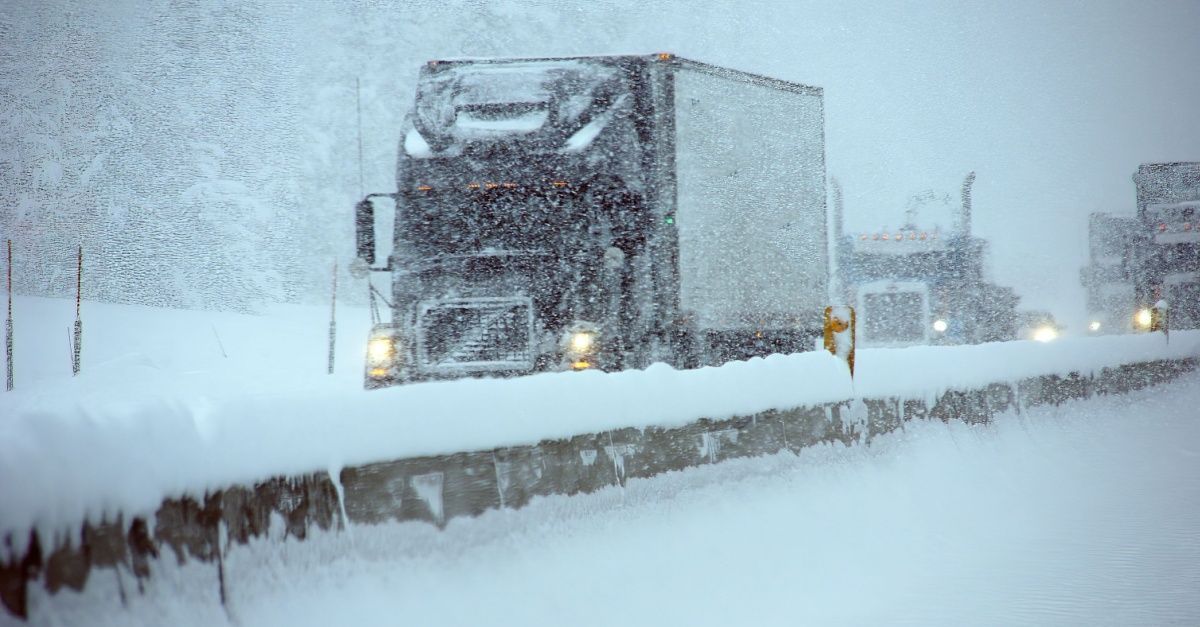Freight Front-Loading, Reverse Logistics, and a Shrinking Trucking Pool
Blog Post CTA
The second half of 2025 is expected to bring significant shifts in freight routes, regulations, and border infrastructure. In May, dry van and reefer volumes rose slightly as shippers rushed to move goods ahead of expected tariffs. But experts say the bump won’t last.
At the same time, rising costs and trade uncertainty are forcing more companies to focus on reverse logistics — finding new value in returned goods while dodging fresh tariff hits. Adding pressure, the government’s tougher rules on English proficiency are cutting into the already short supply of truck drivers.
Big carriers like Schneider and J.B. Hunt are warning about tighter capacity, even as freight rates stay flat due to weak demand and surplus inventory.
A brief spike in imports on the West Coast, driven by the end of tariff relief, has given way to concerns about a weak peak season.
Still, long-term investments at the U.S.-Mexico border continue, including bold new projects like the Green Corridors operating on raised tracks. This edition breaks down the data behind shifting freight capacity, rates, and infrastructure upgrades.
Freight Ticks Up in May but Summer Looks Soft
Spot rates and volumes for dry van and reefer freight inched up in May as shippers tried to get ahead of summer slowdowns and possible tariffs, according to DAT Freight & Analytics. Dry van rose 3%, and reefer climbed 5%. But the boost may be short-lived.
“It was a bumpy month,” said Ken Adamo, DAT’s chief analyst. “Roadcheck, Memorial Day, and tariff moves all played a part.” Dean Croke at DAT iQ said peak-season shipping was pulled forward to spring. Imports have been elevated since last fall, which could flatten the rest of the year. “There are still too many trucks for the loads available,” he noted.
That means tighter margins and more strain across the industry. Circle Logistics echoed the concern, but remains hopeful that consistent flows along key lanes could offer some relief. The lack of a coherent trade policy, however, leaves the freight outlook unstable as we move into the second half of 2025.
Reverse Logistics Gains Ground as Tariffs Bite
Returns are becoming a critical tool for retailers squeezed by high tariffs and rising costs. The U.S. reverse logistics market reached $150 billion in 2024 and is projected to grow at a rate of 6%-8% annually, according to Alix Partners. By processing returns more efficiently, retailers can resell goods, avoid purchasing new inventory, and safeguard their profits.
“Returns help cut costs —
especially now that tariffs make new goods pricier,” said Casey Chroust, COO of Optoro. With return handling often costing 30% of the item’s price, efficiency matters. Chroust added that 63% of retailers are selling secondhand goods, and more than 75% of consumers are open to buying them.
Luxury reseller Stork saw a 74% increase in pre-owned stock last quarter and reduced intake time from months to days, thanks to the help of AI tools. For these companies, returns aren’t just about sustainability — they’re a growing revenue stream. Total U.S. returns were expected to reach $890 billion last year, and logistics giants such as DHL, UPS, and FedEx are expanding their reverse logistics operations.
English Rules Shrink Driver Pool, Push Rates Up
The Federal Motor Carrier Safety Administration (FMCSA) is cracking down on English language rules for truck drivers. As of June 25, drivers who don’t meet federal standards can be pulled off the road immediately. FreightWaves says about 10% of drivers may be affected.
Currently, the market appears stable, with only 6% of loads being rejected, according to SONAR. But that may change fast. With fewer qualified drivers, rejection rates could rise. That would shift pricing power to carriers and drive rates higher. The National Truckload Index, now at $2.27 per mile, is expected to climb.
Fleet operators are encouraged to implement English language training programs to protect the viability of their workforce and ensure regulatory compliance. Shippers, meanwhile, should brace for elevated costs and tighter capacity through the second half of 2025. With compliance costs rising and driver pools tightening, market dynamics are shifting fast under FMCSA’s new emphasis on language standards.
Carriers Brace for Impact From New Regulations
Leaders at Schneider and J.B. Hunt predict that truckload capacity will shrink in late 2025, not because demand is growing but because new regulations are reducing supply. At a Wells Fargo conference, both cited tougher enforcement of English standards and possible crackdowns on illegal trucking under B-1 visas.
J.B. Hunt COO Nicholas Hobbs expects growth as excess trucks leave the market. Schneider CEO Mark Rourke said domestic demand is “steady, if unspectacular,” but warned that English rule enforcement, now triggering automatic shutdowns, is having an overlooked regional impact.
In 2024, 9,510 violations were cited, but only six drivers were sidelined. That number will likely surge as a result of the June 25 rule change. Hobbs also noted that scrutiny of cabotage when foreign drivers haul U.S. freight is growing and could further limit cheap labor options.
For carriers, the shakeout may help end a long slump.
Freight Demand Slips and Rates Stumble
Fresh data shows freight demand weakening. The Cass Freight Index and Producer Price Index (PPI) both dipped in May. Cass reported a 0.4% drop in shipments from April and a 4% year-over-year decline, worse than April’s 3.6% fall. Pre-tariff stocking is fading, and destocking has begun.
Truckload pricing rose 0.6% from the same period last year but fell 0.8% from April. Since February, rates have decreased by 1.5%. The Journal of Commerce reported May’s average all-in rate was $2.18 per mile, 8% below January and just under May 2024’s rate.
The long-haul PPI stayed flat at 177.3 in May, up only 3% from last year. The LTL PPI also slipped after record highs. June volumes are expected to fall another 2% year over year. Carriers remain cautious, citing weak consumer demand and uncertainty related to tariffs.
West Coast Import Rush Masks Soft Peak Season
A short-lived import surge is hitting West Coast ports as shippers rush to take advantage of expiring tariff breaks. The ports of Los Angeles and Long Beach anticipate their busiest weeks since early 2025, with nearly 140,000 containers forecast for late June and early July. The jump comes ahead of July 9 and August 14 tariff deadlines.
Kip Louttit of the Marine Exchange of Southern California says ship traffic is the highest in months. The Northwest Seaport Alliance also reports more vessel calls. But May was slow, so congestion isn’t expected. Still, spot rates are shaky. Prices from Asia to the West Coast dropped to
$2,900 per container, a 10% decrease in a week and 50% from the June highs.
The National Retail Federation predicts a sharp drop in imports from July through October, suggesting this early “peak” is just a blip.
US-Mexico Freight Projects Target Bottlenecks
Despite tariff worries, cross-border freight investment is booming. Laredo, Texas, now America’s top import hub, sees more than 18,000 trucks daily. Waits can stretch to 24 hours. New projects in Texas include two additional bridges in Laredo and Eagle Pass, as well as an 18-lane expansion in McAllen.
The big bet is on Green Corridors, a privately funded project approved in June that involves a 160-mile elevated route for autonomous freight shuttles between Laredo and Monterrey. The $6 billion to $10 billion project aims to reduce emissions, traffic, and delays.
All shipments will be scanned, compared to just 5% today, boosting security.
Backed by Chang Robotics, KPMG, and local governments, Green Corridors has five years to launch. If it works, it could serve as a model for similar routes near Houston and other major ports. For now, it’s a bold plan to combat strained border logistics.
Experience Seamless Shipping with Entourage Freight Solutions
Entourage Freight Solutions believes in total transparency in the shipping process. That is why we invest in tech solutions that track every shipment extensively, monitor every driver, and extract every bit of efficiency without sacrificing quality.
Our state-of-the-art platform utilizes cloud-based GPS tracking to keep you informed, reroutes shipments on the fly to avoid delays, and even responds to real-time market changes to ensure you receive your shipment on time and as soon as possible.
Our Services:
- Full Truckload (FTL): When you need a truck all to yourself.
- Less-Than-Truckload (LTL): Efficient solutions for multi-stop shipments or combining smaller loads to save on costs.
- Refrigerated Trucking: Keeping your temperature-sensitive products fresh and safe.
- Cross-Docking: Strategically located facilities in Shelby, Ohio, Cedar Rapids, Iowa, and Romulus, Michigan, for streamlined consolidation, storage, and distribution.
Ready to experience a new level of service and control in your freight shipping?Request a quote today to see how Entourage Freight Solutions can help with your freight movement and other supply chain needs.









